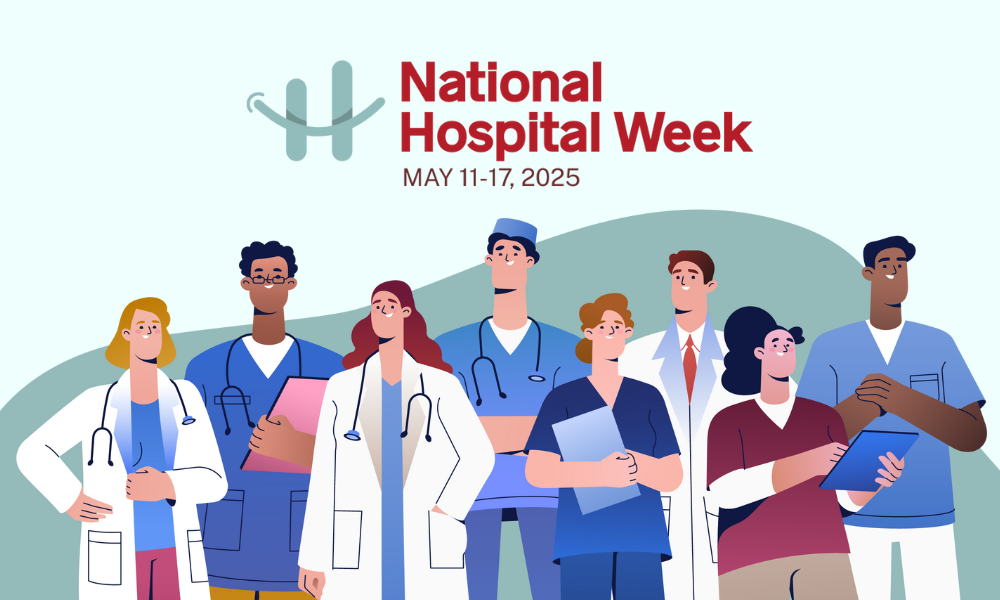The healthcare staffing industry has seen a steady rise in the popularity of locum tenens over the past few years due to its ability to deliver fiscally sound, flexible labor solutions. This trend is expected to continue unabated in 2023 as the healthcare industry experiences steady growth and locum tenens represents one of its fastest-growing staffing segments.
In a late January LinkedIn post, former AMN president Ralph Henderson predicted that in 2023, locum tenens “will grow by high single digits, driven by clinician shortages and COVID deferred treatments, partially offset by healthcare system profitability headwinds.”
In March, Locumpedia surveyed locum tenens industry experts to gauge their reactions to what Henderson saw in his crystal ball.
Before we get to those responses, it’s worth taking stock of the state of America’s economic union to provide important context to understand whether Henderson’s enthusiasm should be tempered or his prediction wasn’t exuberant enough. Perhaps then our readers can form their own judgments of what to expect in locum tenens this year.
Here’s what you’ll find in our 2023 locum tenens outlook:
- Please DO Adjust Your Picture?
- Sand Shifting Under Post-Pandemic US Healthcare
- Retail Disrupters Step Up Their Foray into Healthcare
- Physician Shortage Growing
- Healthcare Employment and Spending is Growing, But…
- Could Temporary Healthcare Staffing Save the Day?
- Trend Spotting: Locums + Tech = Sustainable Staffing?
- Where Do We Go from Here?
- CHG: More Physicians Taking Short-Term Locum Tenens Assignments
- Locum Tenens Agency Experts Offer Insights
- Locum Tenens Is a Valid Solution for Both Physicians and Healthcare
Please DO Adjust Your Picture?
According to a report by Market Statsville Group, the healthcare staffing market was valued at $22.5 billion in 2022 and is projected to grow at a compound annual rate of 5.7% from 2023 to 2030.
To address the growing physician shortage and staffing issues in the US healthcare system, healthcare organizations are adopting locum tenens as a permanent staffing strategy. Locum tenens provides flexibility and expands specialty services, making it an effective solution for physicians and healthcare, particularly in the current economic climate. Moreover, healthcare organizations and locum tenens agencies utilize technology to streamline patient care and create a sustainable staffing model.
Despite economic challenges such as high-profile bank failures and inflation, healthcare staffing continues to grow, with locum tenens as a significant contributor. The Federal Reserve’s decision to raise interest rates may create tighter credit for consumers and businesses, and tech and manufacturing companies have experienced significant layoffs.
Sand Shifting Under Post-Pandemic US Healthcare
Staffing Industry Analysts (SIA) recently highlighted The Conference Board’s economic forecast that “The Leading Economic Index is now down 3.6% over the six months between August 2022 and February 2023, a steeper rate of decline than its 3.0% contraction over the previous six months.
“Overall, The Conference Board forecasts rising interest rates paired with declining consumer spending will most likely push the US economy into recession in the near term.”
A few days earlier, SIA highlighted a UCLA Anderson Forecast indicating, “The US economy is at a critical juncture, with the potential for a recession toward the end of 2023.“
The list of top stories in Becker’s Hospital Review on March 26, 2023, summarized the state of the US healthcare industry at the precipice of the second quarter:
- “18 hospitals closing departments or ending services”
- “29 physician specialties ranked by 2022 burnout rates”
- “29 hospitals, health systems cutting jobs”
- “6 hospital closures in 3 months”
In October 2022, Becker’s Hospital Review reported that, “An estimated 333,942 healthcare providers dropped out of the workforce in 2021,” with burnout and aging workforce being contributing factors. Hospitals and health systems are also facing mounting financial challenges, with estimates showing billions of dollars in lost income since the pandemic began.
Retail Disrupters Step Up Their Foray into Healthcare
In case the upheaval within the traditional US healthcare industry isn’t enough, retail giants like Amazon, Walmart, and CVS aim to disrupt how and where healthcare is delivered, and possibly, at what cost.
Outpatient clinics inside retail outlets like Walgreens stores already indicate they can provide urgent, routine, and preventive care more efficiently–and conveniently than hospitals or physicians’ offices.
A recent Axios article described it like this: “At its core, these companies are pulling together different tech-enabled services – urgent, primary, home and specialty care, pharmacy, and, in some cases, full integration with an insurer.”
Of course, big retail chains will compete with hospitals, health systems, and physician practices for the same base of physicians and advanced practice providers.
Physician Shortage Growing
On March 29, US Reps. Terri Sewell (D-Ala.) and Brian Fitzpatrick (R-Pa.) introduced the “Resident Physician Shortage Reduction Act of 2023,” designed to expand the number of Medicare-supported medical residency positions by 14,000 over seven years.
In its March 29 news release, the AAMC (Association of American Medical Colleges) “enthusiastically endorsed” this legislation as a way “to address the growing physician shortage and improve access to care nationwide.
“According to AAMC data, the United States faces a projected physician shortage of up to 124,000 physicians by 2034, with demand for physicians far outpacing supply. The nation’s demographics—particularly population growth and aging—serve as the primary driver of increasing demand for physician services.”
Healthcare Employment and Spending is Growing, But…
RevCycle Intelligence reported recently that healthcare employment has continued to grow steadily in 2023, with 44,200 new jobs in February.1
“Healthcare job growth in February was consistent with the 2022 average of 46,300 jobs added per month,” RevCycle Intelligence reported. “Employment growth was led by hospitals, which added 19,400 jobs. Nursing and residential care facilities added 13,700 jobs, and ambulatory settings added 11,100 jobs.
“Compared to February 2020, just before the COVID-19 pandemic hit, healthcare employment overall is up by 1.3% or 207,000 jobs.”
However, hospital employment is up by just 0.8% (42,000 jobs) from February 2020, while ambulatory care employment has increased by 5.6% (nearly 440,000 jobs). Nursing and residential care employment is down by more than 270,000 jobs, or 8%, compared to three years ago.
As of February 2023, ambulatory care settings represented about 50% of all healthcare jobs, hospital employment represented 32%, and nursing and residential care accounted for 19%.
The moral of this story: Healthcare job growth continues to shift from hospitals to ambulatory surgery centers, rehabilitative care, nursing homes, and home healthcare while healthcare spending continues to rise faster for consumers than third-party payers like federal and state governments and insurers.
1According to Altarum’s March Health Sector Economic Indicators briefs.
Could Temporary Healthcare Staffing Save the Day?
“The US healthcare staffing market size was valued at $22.5 billion in 2022 and is estimated to expand at a compound annual growth rate (CAGR) of 5.7% from 2023 to 2030,” according to analysis by Market Statsville Group (MSG). (A Precedence Research report released in December 2022 projected that US healthcare staffing revenue could exceed $40B by 2032.)
The MSG report indicated North America accounted for more than 40% of (global) healthcare staffing market sales in 2021. MSG predicted the region would continue to dominate the global healthcare staffing market.
Further, MSG suggested that, “The locum tenens segment is the fastest growing segment with the highest CAGR due to employers’ cost-effectiveness and physicians’ need for locum tenens labor. Because it is more cost-effective, hospitals; organizations; and clinics choose locum tenens during high seasons and when a permanent physician is on vacation.”
Trend Spotting: Locums + Tech = Sustainable Staffing?
“In 2023, we see great opportunity for healthcare organizations to seize control of their staffing models and embrace sustainability,” LocumTenens.com Vice President of National Accounts Sales Lew Benedict noted in an article entitled, “2023 Healthcare Staffing Trends.”
Benedict noted trends including:
- Continuing physician attrition
- Increased utilization of contingent labor
- Investment into technology to streamline patient care
Regarding continuing physician attrition, Benedict noted, “We are seeing clinicians in their 40s already starting to retire. The retirement rate, as expected, increases significantly as clinicians age.
“Additionally, many are leaving the traditional practice model by creating new roles that fit within a new understanding of work. The gig economy has shifted work for millions of people across the country and world. Physicians are taking the reins and creating new opportunities.”
Benedict observed a shifting mindset among healthcare administrators toward using locum tenens providers strategically rather than merely as “placeholders” until full-time physicians are found.
“We need to innovate to meet the growing healthcare needs of our patients. That requires flexibility. Leaders are adopting locum tenens as a lasting part of a comprehensive staffing strategy because it provides that necessary flexibility while also, in many cases, expanding the level of specialty services offered.
“In today’s market, healthcare organizations must focus on creating sustainable processes and strategies. Contingent labor is a key piece of these efforts, ensuring patients have access to the care they require and entire communities are positioned for long-term wellness.”
Benedict also suggested that technology will play an increasing role in care delivery. He thinks this will continue expanding in 2023 as healthcare organizations embrace virtual medicine.
Where Do We Go from Here?
There are 6.3 million more jobs than workers in the US today, according to SIA President Barry Asin in his keynote address at the executive forum his company hosted in Miami Beach, Fla., in early March 2023. More than 1,550 attendees from 24 countries attended the conference.
Asin noted the labor force participation rate for adults older than 65 was 19.3% in January 2023, down from 20.7% in January 2020.
More importantly for locum tenens staffing, “SIA research found that spend on contingent work increased (by) 28% since 2019 to $1.7 trillion in 2021.” SIA reported that most of that ‘spend’ (57%) went to independent contractors and self-employed workers.
Asin noted that healthcare staffing has increased by about five times the segment’s pre-pandemic level, making it the largest segment in staffing with revenue of $55 billion in 2022, up from a distant third in 2019.
While he attributed the segment’s growth to travel nursing’s higher pay and greater scheduling control, those in locum tenens staffing know that physicians and APPs are similarly motivated.
Asian added that reliance on contingent workers continues to grow: “Clients are still planning to use more,” Asin said. “From 21% of their workforce today up to 28% in 10 years. … Your clients want and need the service that you’ve got. They want that flexible workforce; you have a solution to deliver.”
CHG: More Physicians Taking Short-Term Locum Tenens Assignments
Released on March 23, 2023, CHG Healthcare’s 2023 State of Locum Tenens Report indicates a significant increase in the number of physicians taking locum tenens assignments.
The staffing giant estimates that approximately 7% of the general physician population, an estimated 50,000 physicians, worked at least one locum tenens assignment in the past year. This represents an 88% increase in physicians taking locum tenens assignments since 2015.
“Influential association and healthcare organization leaders understand the value of a strategic, proactive approach to temporary staffing and flexibility, especially when partnered with a strong and caring staffing partner,” CHG Healthcare CEO Scott Beck said.
“Locum tenens provide a crucial safety net for continuing patient access to care while also giving physicians facing burnout a flexible way to continue practicing.”
The report shows among physicians working locum tenens, slightly more physicians are working this way full-time (43%) than they were in 2019 (30%).
The CHG Healthcare report found that most physicians with locum tenens experience (59%) reported taking their first assignment within 10 years of completing their medical training. While there are rising rates of physicians seeking locum tenens engagements earlier in their careers for work/life balance, the largest segment of the current locum tenens workforce is mid- to late-career physicians over 45.
The report also revealed perceptions about locum tenens across physicians, patients, staffing personnel, and colleagues. When asked about their overall impression of locum tenens, 71% of physicians reported having a “very positive” or “somewhat positive” impression of locum tenens. Favorable impressions have remained steady over the past few years.
Hospital staffing personnel report a high acceptance of locum tenens usage in their facilities, with some even embracing the model. Administrative staff (79%) and physician colleagues (76%) stated they accepted locums physicians; 16% and 13% of those groups, respectively, embrace the model.
Locum Tenens Agency Experts Offer Insights
Considering all of these factors, more than half (57%) of locum tenens agency experts responding to Locumpedia’s recent survey about the industry’s 2023 outlook predicted revenue growth for 2023 will beat 2022’s by 8 to 10%. At the same time, one optimist among the respondents said 2023 revenue will grow by more than 10% year-over-year.
The remaining respondents agreed with SIA’s more conservative prediction of 4-7% year-over-year revenue growth.
Respondents agreed universally that demand for locum tenens clinicians will increase as 2023 progresses–and that the number of physicians and APPs seeking locum tenens assignments will continue to increase this year.
Emergency medicine, psychiatry, anesthesiology, and internal/family medicine lead the list of medical specialties responding experts expect to be in greatest demand in 2023. Other predictions included OB/GYN, neurology, oncology, urology, and cardiology.
One locum tenens expert suggested that hospitalist and emergency medicine opportunities will decline as permanent positions get filled. Others expect fewer calls for OB/GYNs, ICU pulmonary specialists, anesthesiologists, pathologists, and dermatologists. No specialties mentioned got more than one ‘vote.’
Here are some expert observations we received regarding emerging trends across the locum tenens industry as 2023 progresses.
Work-Life Balance
Both Floyd Lee Locums CEO Natasha Lee and Hayes Locums Founder Ryan Scharer think 2023 will see a wide range of physicians–at all career stages–seeking locums work to gain back control over their careers.
Medstaff National Medical Staffing VP Rob Hugill said: “Provider burnout will continue to be the biggest concern, and it will likely come from IM/FM providers from the larger health systems looking to step away from their M-F, 8-6, plus call, ‘routines.’ Some might shift to locum urgent care or emergency medicine opportunities where the pressure of continuity of care isn’t as heavily necessary, and they can work 7 on/7 off without call duties on their off days/weeks,” Hugill added.
Dual Benefits: A Win-Win Staffing Solution for Employers & Employees
Interim Physicians CEO Tim Hand suggested that both board certification and physicians’ having multiple DEAs will be ‘musts’ for doctors seeking locum opportunities. Also, he thinks more states will start accepting the Interstate Medical Licensure Compact to speed up credentialing.
WPA Emergency Medicine Staffing Manager Shannon Colosimo predicted that CRNAs and hospitalists would become more indispensable in filling staffing gaps.
Career Growth Potential
According to Dr. Andrew Wilner, division director of neurology, Regional One Health-UTHSC, “It seems that more and more younger physicians are less and less inclined to sign on to conventional jobs with limited freedom and growth potential. Locums is increasingly attractive and will continue to grow as long as permanent positions fail to entice younger, idealistic physicians, many of whom carry substantial educational debt.“
Aya Locums EVP Sophia Morris said, “As we move forward in 2023, a discernible trend is emerging in the clinical experience level of those pursuing locum tenens work. Specifically, we are witnessing a notable expansion in the scope of practice for advanced practice providers, with greater opportunities for independent decision-making and a reduced need for direct supervision.
- “This shift signals a growing recognition of the valuable contributions that these professionals can make to the healthcare landscape and suggests a promising future for those seeking to explore locum tenens as a career path.”
Locum Tenens Is a Valid Solution for Both Physicians and Healthcare
Looking again at Becker’s Hospital Review headlines for April 2, the turmoil across US healthcare persists:
- “13 CEO exits in March”
- “6 hospitals, health systems hit with rating downgrades”
- “34 recent hospital, health system executive moves”
- “How 4 health systems are preparing for Medicaid redeterminations”
- “Ohio hospital to lay off 743, including leaders and RNs”
Although our experts predict more modest year-over-year revenue growth for 2023 than we saw last year, the locum tenens staffing industry remains one of the bright spots across US healthcare.
“The healthcare industry has faced a clinician shortage for many years. However, the COVID-19 pandemic has created even greater need for healthcare workers while at the same time driving many away from the industry,” according to CHG Healthcare’s 2023 State of Locum Tenens Report.
As CHG Healthcare CEO Scott Beck sees it, locum tenens helps address two of the three top issues facing healthcare today:
- The ongoing healthcare workforce shortage
- The growing imbalance between clinician supply and demand in urban versus rural or other underserved areas
- Physicians’ desire for better work/life balance and more flexibility from their jobs
“They come into those underserved areas and provide patients the care they desperately need,” Beck said. “They also alleviate some of the burden being put on staff physicians, allowing them to take a vacation, a leave of absence, or just have some additional help. And it’s not just traditional locums; we’re also seeing growing demand for tele-locums, with physicians working online, never having to leave the comfort of their homes.
“Working locums is also a great way for physicians to find better work/life balance for themselves by working where and when they want…Locums lets physicians bend their work around their life, in contrast to the years they spent bending their lives to fit around their education, training, and careers.”
Beck noted that while locum tenens is far from being the solution to everything healthcare is facing today, it can be a great solution for both healthcare facilities and physicians:
“We are dedicated to providing a working environment that supports health and wellness, strong work/life balance, and building a community that meets the needs of the health systems we serve,” he concluded.










